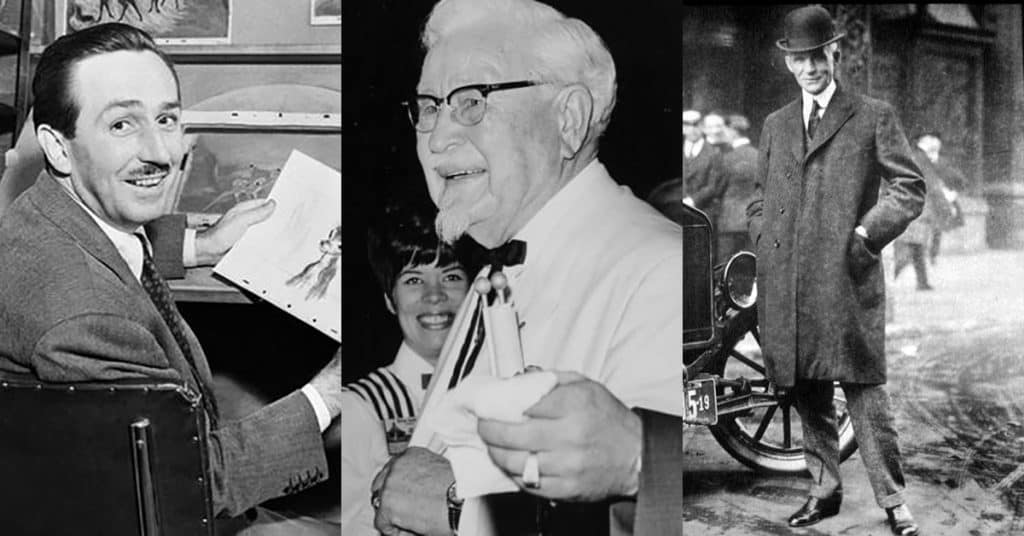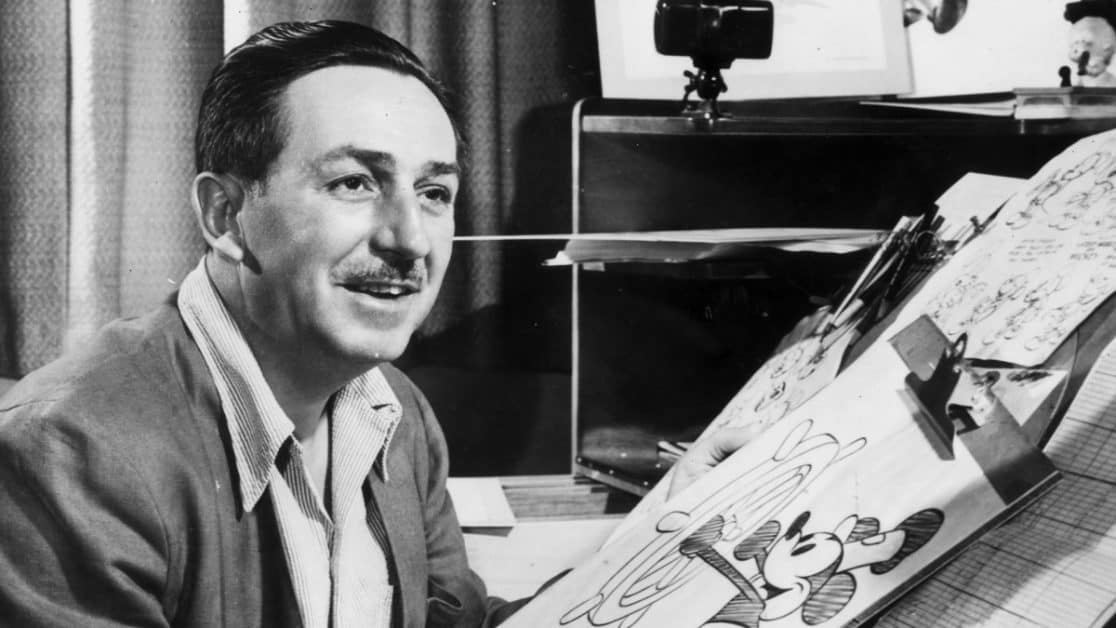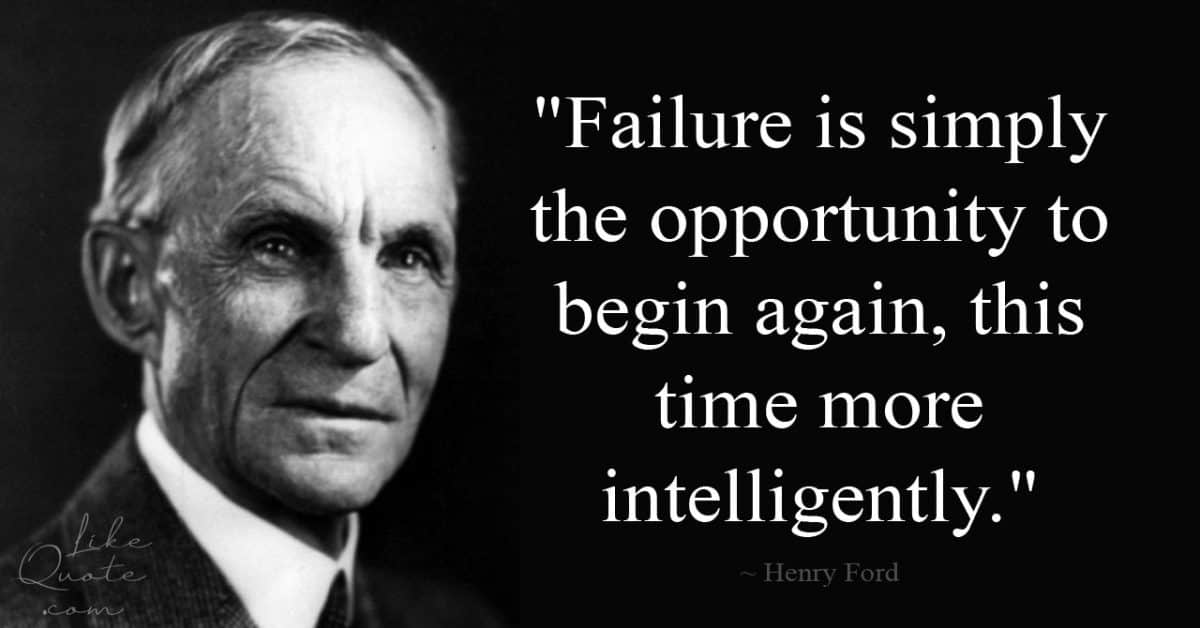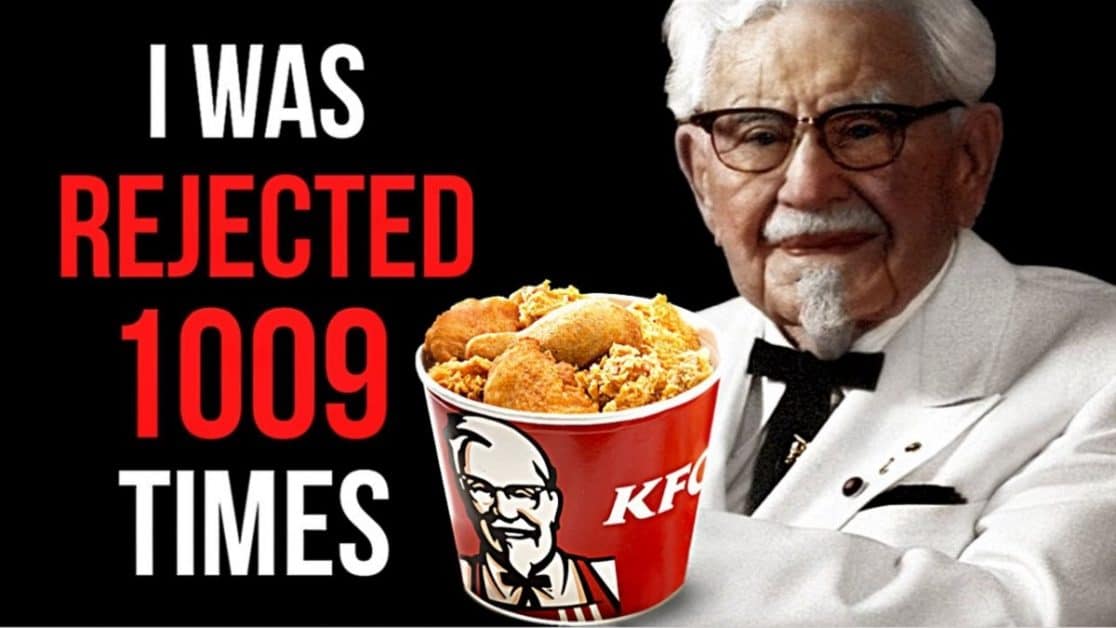
© 2025 Modern Mind Masters - All Rights Reserved

Here at Modern Mind Masters, our motto is that success is simply the accumulation of enough failures for you to acquire the necessary knowledge to achieve your goal. To help visualize this, let’s take a look at the incredible stories of three resilient men who failed their way to become History’s most successful failures.

A “lack of imagination” and “having no good ideas” are hardly two quotes we are likely to associate with Walt Disney, creator of one of the most powerful and influential entertainment companies in history. But this was exactly the reason for his termination when working as an animator for the Kansas City Star in 1919.
Despite the groundbreaking animations and genius storylines, Walt Disney’s $220 billion journey was anything but smooth.
His life was tough from the start. His father, Elias, was a domineering figure who was allegedly abusive as he tried, unsuccessfully, to make ends meet for the family. Walt and his brother, Roy, were made to wake up at 4:30 am to complete the local paper round, a job which they kept up for six years.
Having been fired from his first job at the Kansas City Star, he and Roy decided to launch their own cartoon business, Laugh-O-Gram Studios, in 1920. Despite his now obvious talents, the company filed for bankruptcy after just a couple of years of constant struggling, with nothing to show for it.
With this loss sitting heavy on his shoulders, and just $40 lining his pockets, Walt took the advice of a friend and headed to California to try his hand at acting. For poor old Walt, however, this was another failed attempt.
But in the ashes of this failure rose a phoenix of opportunity. Having noticed a lack of established animation studios in California, Walt convinced his brother to create another animation studio, this time armed with the lessons learned from their first attempt. It wasn’t long before they struck success with the creation of Oswald the Lucky Rabbit.
But as quickly as success came, failure came quicker. Upon traveling to New York to renegotiate his contract, he discovered that one of his producers had taken his team of animators as well as the legal rights to his hit Lucky Rabbit.
Only Walt and those close to him can know of the emotions he faced here, but rumors circulated that he suffered from depression after he fell from success. But somehow, Walt dug deep and decided to give it another go. And it is at this point in his already eventful life that he came up with a new idea involving a certain black and white mouse.
Perhaps you’ve heard of it? The now-iconic Mickey Mouse (at age 93) still rakes in an estimated $10 million annually on YouTube alone. Yet this timeless wonder did not get the start you might expect of such an icon. Over 300 bankers rejected Walt’s concept before one would give it a chance. But often, a single chance is all it takes.
Despite his second success, Disney still faced challenges maintaining his business. He was overworked, in constant battle with his producers, and struggling to keep his cash flowing. At the start of the Second World War, his workers went on strike and his debts exceeded $4 million. It all took its toll and Walt has a nervous breakdown.
Once again, perhaps fueled by the memories of his previous recoveries from defeat, he dug deep and came back fighting. Having learned his lessons from previous voyages into the savage animation industry, Walt decided he needed to diversify. And boy did his gamble pay off.
It wasn’t long before he added TV shows to his film portfolio, and the now famous Disneyland soon followed in 1955. Despite forged tickets, queues that were measured in miles, 100-degree weather melting women’s high heels into the freshly paved asphalt, and even malfunctioning rides, the park’s popularity spread like wildfire.
Not many would be able to endure two failed companies and still possess the motivation to start a third. Few would be able to accept the loss of their signature creation only to move on and invent another. Walt Disney succeeded where most would fail because he used his failure as a base for learning.
With each failure came a lesson, and with each lesson, he built a more fortified position in the industry. In Walt’s own words, “the difference between winning and losing is most often not quitting.”
You’ll Learn:


Few people are as shrouded in controversy as Henry Ford. History acknowledges him as a pioneer of the early 20th-century automobile industry, having made the automobile available to the masses through the perfection of his assembly lines.
Such was his success that in the early 1920s, half the vehicles in the world were Fords. And he achieved this with zero advertising between 1917 and 1923.
But history does not often show his personal side. He was alleged to have been an antisemite and Nazi supporter and used his company, money, and influence to spread and legitimize antisemitic views.
He received the “Grand Cross of the German Eagle” in 1938 and is the only American to be mentioned by name in Hitler’s infamous book “Mein Kampf”.
Whether hero or villain, it is clear that Henry Ford knew that failure was fundamental to learning. The current world’s fourth-largest automotive company, Ford Motor Company, was Henry’s third attempt to break into the industry.
His first attempt, the Detroit Automobile Company, folded after just 18 months. Ford’s failure here was not his lack of skill, however, in fact, it was the opposite. He wanted his vehicle to be perfect. Engineering was his talent, and he wanted the vehicle to be the best on the market in every way.
As every entrepreneur knows, however, the most efficient way to launch a product is to create an MVP (minimum viable product), the most basic version of the product you want to sell.
The aim is to simply get cash flowing and obtain invaluable information about your customers’ wants and needs. But Henry strove for perfection straight out of the gate, and his financial backers lost their enthusiasm (and investment) and decided to cut their losses.
With his first failure under his belt, it was time for attempt number two. His second venture, the Henry Ford Company, would surely not suffer the same fate with the lessons he had learned from the first? Wrong. Somehow, Ford managed to persuade his previous backer from the first attempt, William H. Murphy, to give it another go.
This time, however, Ford would not attempt to create a vehicle to meet everyone’s needs, instead, he would narrow his focus to specific customers (if he had created an MVP he would have discovered this without wasting so much time and money from the first venture).
Yet this second company suffered the same fate. Ford took great offense to Murphy bringing in an experienced outside manager to speed up the production of the vehicle. Ford, never one to be rushed or cut corners, left the company and was written off in the automotive industry.
Beaten, but not defeated, Ford finally learned the most valuable lesson of his career. The first two companies failed because his investors did not share the same vision as he did. Whereas his investors’ main priority was profit, Ford’s was to create a high-quality product for the masses.
He finally found an investor with the same vision, Alexander Malcomson, who left Ford to his own devices, which resulted in the Ford Motor Company we know today.
Ford’s greatest weakness was his lack of business acumen. He was an engineer at heart and a damn good one. Fortunately, he was a quick learner, and two failed companies were enough for him to learn that product quality is not enough to sustain a business. Compromises had to be made and cash is king. And he certainly did learn this lesson.
The Ford Model T was an incredible compromise. Instead of offering a multitude of colors as we are used to today, he reduced all colors to just black as it dried the quickest and enabled him to produce more vehicles per hour. Had his first company succeeded, he may have denied himself these learning opportunities and may not have gone on to create such an automotive titan.

Colonel Harland Sanders was an inspirational serial failure. Whereas Disney and Ford narrowed their failures to just one industry, Sanders failed in many!
Like many resilient successful people, Sanders had a tough start in life. After the death of his father when Harland was just 5, he was left in charge of his household while his mother toiled away in a factory. Harland’s mother remarried when he was 12 to an abusive man. To avoid regular drunken beatings, Harland fled his family to go and live with his uncle.
Shortly after, at age 15, he lied about his age to join the army where he was stationed in Cuba. After just four months, however, he was honorably discharged and never received the military colonel title. It was only later in 1935 did Kentucky Governor Ruby Laffoon awarded Sanders the honorary title for his charitable work.
According to various biographies, Sanders was a rough, volatile man who loved to swear, and despite his hardworking nature, often found himself unemployed.
For the first half of his life, he was a sixth-grade dropout, a farmhand, an army mule-tender (honorably discharged), a locomotive fireman, a railroad worker (fired for getting into a fistfight), an aspiring lawyer (fired again for getting into a fistfight with his own client in court), an insurance salesman (fired for insubordination), a ferryboat entrepreneur (put out of business after a bridge across his route was built), an acetylene lighting company owner (put out of business by electricity), a tire salesman (made redundant after a crash made him unable to drive), an (unsuccessful) political candidate, a gas station operator and a motel operator. All of these came to the same conclusion – failure.
What Sanders did seem to possess, however, was “a consuming drive to conquer all the adversities that occurred in his life,” his daughter Margaret wrote in The Colonel’s Secret. Perhaps because of his tough childhood, Sanders possessed a resilience that we all aspire to. Failure for him was not personal, it was purely business, and knew nothing else of life other than working hard.
Unfortunately, this outlook is not great for raising a family. His first wife, Josephine King, took their children and left, quoting not being able to hold a job as the primary reason.
But it was the failure of his successful gas station that Sanders gives credit as “one of the most important turning points in my career”. This failure did not deter him from starting a second gas station in a deal with Shell in 1930. Sanders would serve some food from a table in the gas station to earn a little extra money; the seed that would later flourish into his legacy.
Thanks to the finger-lickin’ success of his fried chicken recipe, what started as a gas station side hustle soon turned into a roadside restaurant. Despite opening two other similar restaurants, which he sold after their eventual failure, his first was by far a qualified success.
But bad luck never strayed too far from Sanders. Seven years after the death of his son from an infection after having his tonsils removed, his restaurant burned to the ground on Thanksgiving.
In yet another sign of his inherent resilience, Sanders rebuilt the restaurant from scratch, investing in modern pressure cooking technology which enabled him to speed up the cooking process significantly, a technique he later patented. Had his successful restaurant not burned down, would he have been presented the opportunity to develop this new technique? Food for thought.
Sanders managed to make it a good few years with his successful roadside restaurant before bad luck would rear its ugly head again. A newly built highway directed traffic away from his restaurant, meaning he had no option but to sell his doomed business. He received $75,000, just enough to cover his taxes and outstanding liabilities. At this point, Sanders was 65, the age where he would start to collect his social security.
After a lifetime of failed business ventures, one might be happy to start receiving guaranteed monthly payments. But at $105 a month, Sanders was in despair. As his friends retired with pensions and everything a pensioner would need to enjoy their newfound freedom, Sanders was penniless and had nothing to show for it. Except, he soon realized, he did.
He knew his unique patented pressure cooker and mix of herbs and seasoning created a flavor and texture that no other could beat. So he focused on this and started driving up and down the country to find restaurants that would pay him a nickel for every piece of chicken sold using his formula.
One of his franchisees, Pete Harman, convinced him to create a restaurant dedicated solely to fried chicken. They called it Kentucky Fried Chicken. And the rest is history. By 1963 there were over 600 locations, and a year later he sold the entire business for $2 million (about $15 million today).
This may have seemed like a mistake, considering the scale of KFC today, but Sanders knew it was too much for him – the marketing and logistical side was not in his skillset. After an entire life of pushing, rising, and falling back down again, the Colonel knew when it was time to cash out. Through continual failure, Colonel Sanders was finally awarded his success.
For more information on turning failure into success, see this article here.
Let me know your thoughts down below in the comments!
© 2025 Modern Mind Masters - All Rights Reserved
You’ll Learn:
Effective Immediately: 5 Powerful Changes Now, To Improve Your Life Tomorrow.
Click the purple button and we’ll email you your free copy.